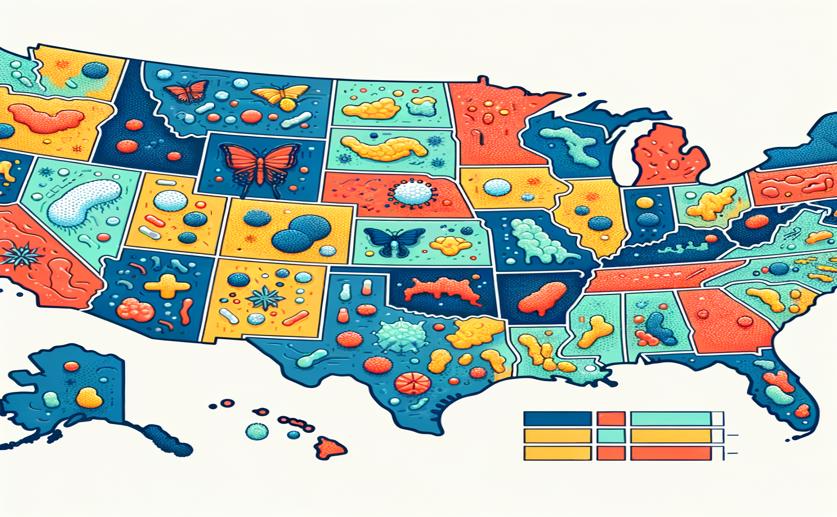
Mapping the Spread and Types of Fungal Infection in the US
Jenn Hoskins
14th March, 2024

Image Source: Natural Science News, 2024
Key Findings
- Study from the University of Brasília found two main fungi, H. mississippiense and H. ohiense, cause histoplasmosis across the US
- These fungi are more widespread than thought, with overlapping areas, suggesting a broader infection risk
- The fungi prefer different climates: H. ohiense likes warm, dry areas; H. mississippiense thrives in cool, wet regions
References
Main Study
1) Tracing histoplasmosis genomic epidemiology and species occurrence across the USA.
Published 11th March, 2024
https://doi.org/10.1080/22221751.2024.2315960
Related Studies
2) The Geographic Distribution of Dimorphic Mycoses in the United States for the Modern Era.
3) Integrating Public Health Surveillance and Environmental Data to Model Presence of Histoplasma in the United States.
4) Histoplasmosis acquired in Alberta, Canada: an epidemiological and genomic study.
5) Chromosome-Level Genome Assembly of a Human Fungal Pathogen Reveals Synteny among Geographically Distinct Species.



 4th March, 2024 | Jenn Hoskins
4th March, 2024 | Jenn Hoskins